Last Updated on 03/11/2023 by Dochlaggie. Post first published on March 21, 2021.
The orange sable Pomeranian and orange Pomeranian have been acknowledged as the typical colors for the Pomeranian dog for decades. Most Pomeranians that appear in any show ring and do lots of winning are usually orange or orange sable.
Pomeranian dogs can come in a variety of colors. However, most people who don’t own Pomeranians consider orange to be the main color and it is, after all, regarded as the classic color for Pomeranians.
What’s an Orange Pomeranian?
The orange Pomeranian color ranges from a light orange shade all the way to a deep rich orange color. The Pomeranian Standard rules that orange Poms need black points like those in the red Poms.
Most Pomeranian lovers know that these magnificent dogs come in different colors. What they find astonishing is that there are multiple shades of each color and this includes orange Poms.
There’s more than one kind of orange Pomeranian dog. The shades range from an extremely pale, almost creamy shade, right through to being a deepish orangey red color.
They can be a very dark sable color when first born, a light orange or even white when they’re first born. An orange pup can be a dark-colored sable when newborn and will often flourish into that lovely orange color once he hits maturity.
What’s a Red Pomeranian?
A red Pomeranian is a deeper color than an orange; more like a red rusty color with points that have to be black.
Orange and Red Pomeranian Facts
- There are two types of Orange Pomeranians.
- Oranges Pomeranians are created by two different genes.
- If there’s no black hair in a dog’s coat, he can be deemed a clear “orange.”
- These orange Pomeranians may have extremely light cream shading and a light orange color.
- Their coat may be a darker, deeper rusty orange color, and that classifies them as being true “red” Poms.
- Within the orange color is a lot of different shades. However, all Pomeranians with orange coloring of any sort are beautiful, and that’s exactly what people envision when thinking about Poms.
Orange Pomeranian Video
Orange Pomeranian puppies and adults.
Orange Pomeranian Gene 1
This is a recessive a(y) gene on the Agouti (A) Locus. When paired, two a(y)a(y) genes are responsible for creating the orange spectrum color for a Pomeranian. When a puppy is first born, his colors can seem to be a brownish grey color instead of the coloring he may develop as an adult.
Because this occurs, many first-time puppy owners assume they own a sable, until they transform into an orange adult. However, unlike clear oranges, they usually have black whiskers and, on the tip of his tail, you’ll also notice black hairs.
Clear Orange Pomeranian Gene 2
A different version of the orange Pomeranian puppy is quite pale, sometimes even an almost white color, when he’s first born. The color of this Pomeranian puppy’s coat generally will deepen until he reaches maturity, when his coat turns into a beautiful orange color.
This is the recessive (e) gene and, along with the E (extension) Locus, is responsible for the orange coloring of a different group of Poms. The gene increases the amount of the yellow pigment within every hair so it’s impossible for any black pigment to form in the dog’s hair.

This means that when these puppies are born, they’re either cream or orange, with clear or straw coloring on their whiskers (never black), dissimilar to the Agouti orange color.
If a Pom breeder has one puppy that’s cream in color, but the rest of the litter are the usual orange, he would be totally surprised unless he had experienced it before. The puppy would definitely stick out.
When these Pomeranians become adults, their shades vary from a virtual cream color (lots of creams are ee) right through to a deeper, brighter orange. It’s almost impossible to tell the difference between many clear oranges and the agouti adults; the missing black hairs and whisker color are the sole indicator.
Some will keep the paler shade and, as they grow older, the nose pigment will fade. This happens more often than agouti oranges.
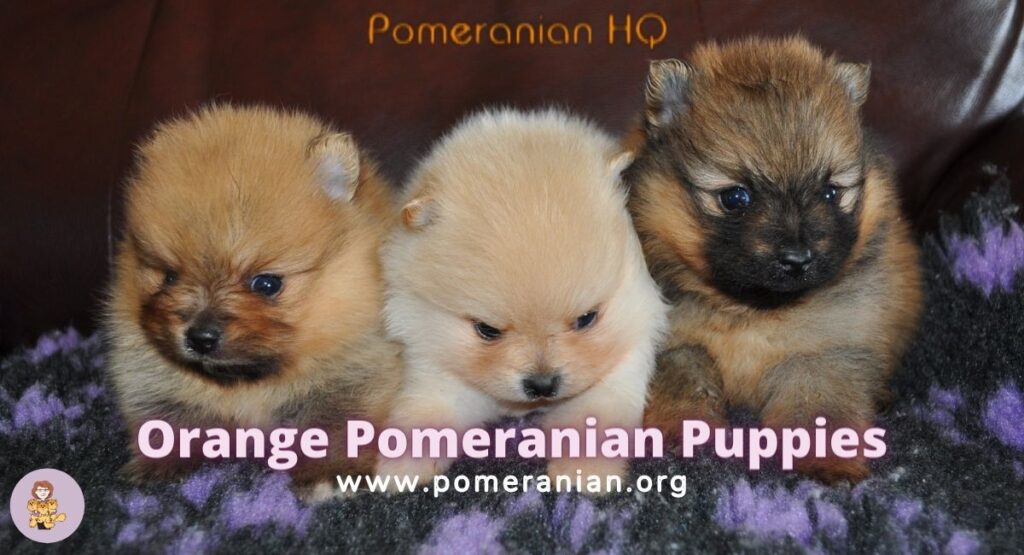
What’s an Orange Sable Pomeranian?
Sable isn’t a color as such; instead, it’s a pattern. “Sable” is the word used when people talk about black banding that appears on a dog’s guard hairs, because that’s how the shade (sable pattern) appears. If there aren’t any other recessives involved, it will look like the orange sable.
There are wide variations in terms of how sable affects a dog’s overall color, beginning with only a few stray black hairs on a dog’s tail or back, right through to an all over heavy sabling (nearly making him into a black & tan).
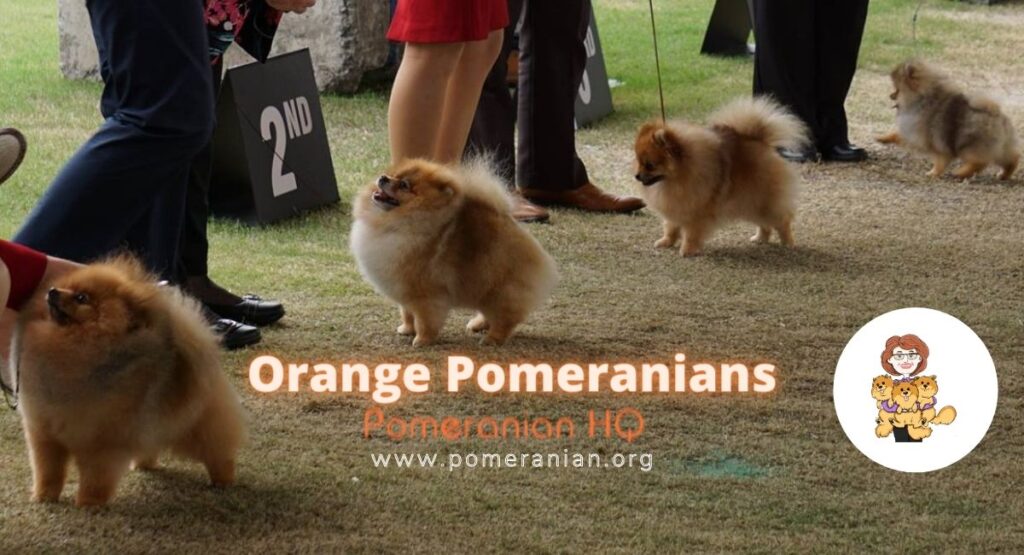
The genes are rather complicated at times. There are sables that have the saddle-sable a(s) gene as well as a(y). Others have a(y)a(y) on top of unknown elements that ensure there’s a lot more black on the dog’s coat. Certain sables can carry the black & tan color and also test a(y)a(t).
When some sables are new puppies, they can look extremely dark, and owners can easily assume they’re black & tans. It’s normal for their coats to become lighter as they grow and the coat turns into what will eventually be the adult coat.
It’s common for the coats of adolescents (4-6 months) to not have much sabling at all. However, as they become adults, and their guard hairs appear, they may revert back to a darker color.
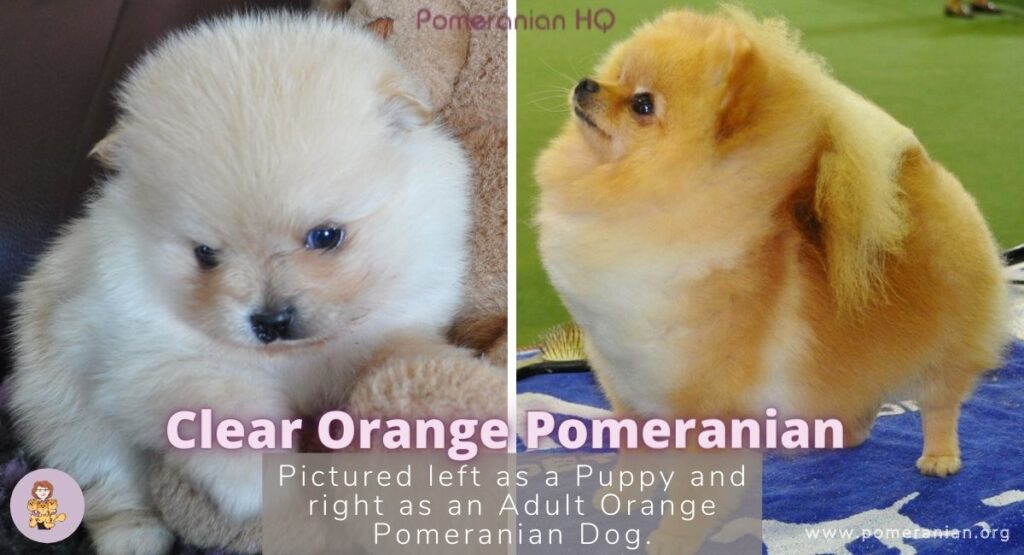
If your Pom’s orange coat has black tips, it’s known as “sabling” and is officially labelled as “orange sable.”
An orange sable Pomeranian puppy at birth is usually a dark color that’s nearly black. More than half of them lose all this black tipping before they become adult Poms and may only retain orange shades. However, some retain the black tipping and others may have a black mask, these dogs are often referred to as a dark orange sable Pomeranian.
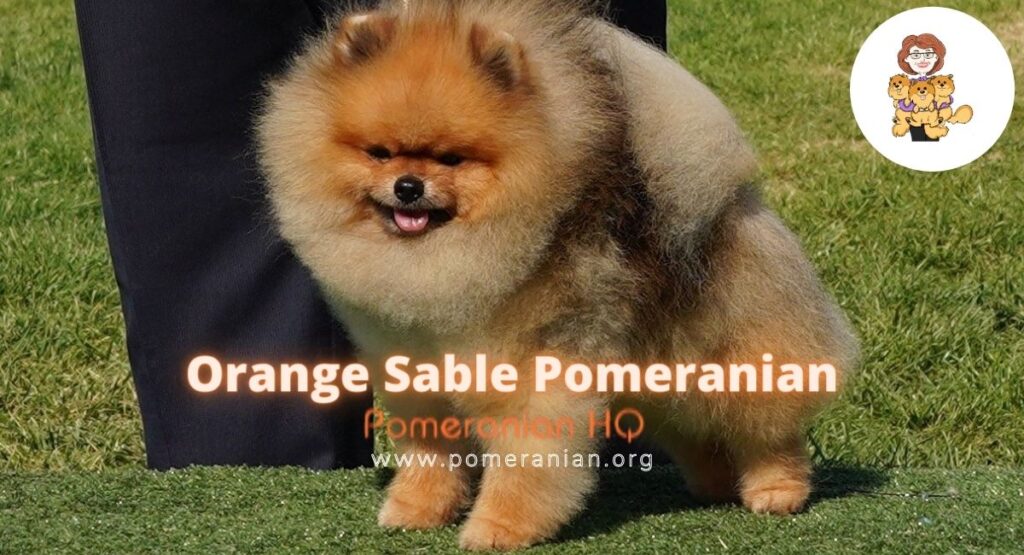
Sables must have a minimum of three shades within his coat. The shades need to be very consistent and have no self-colored areas. The coats of sables possess the
greatest textures:
- Red sables have red hues and black tips.
- Orange sables contain guard hairs of a deep orange color, and black tips.
- Their undercoat is light orange through to cream in color.
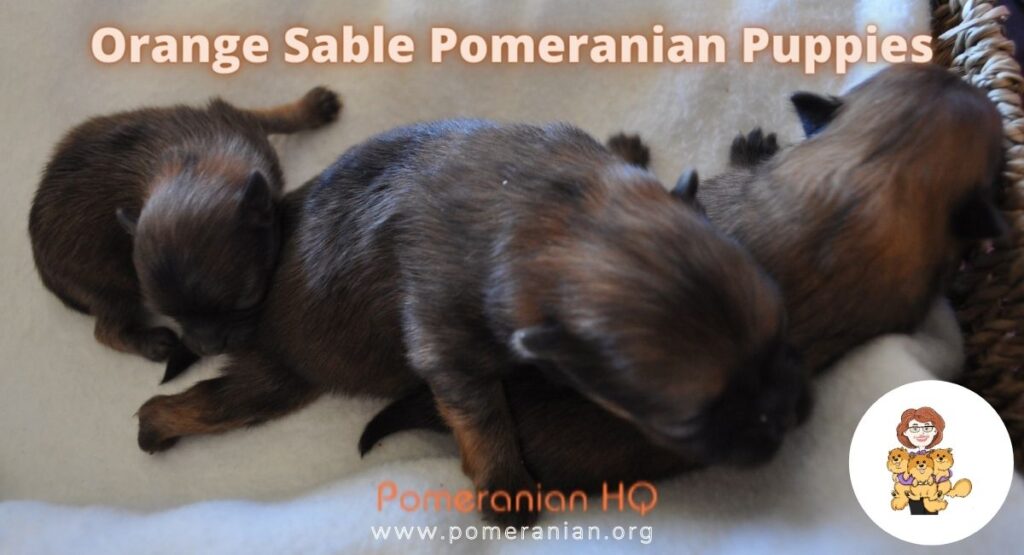
Development of the Pomeranian Dog Orange and Red Sables
A quick look at the history of the Pomeranian dog will help explain how the orange and orange sables developed. We know from research that the first Pomeranians were white, black and beige in color.
In 1890, shaded sables and sables began to appear, starting with the birth of the Prince of Orange. He was a bright sable with collie markings that were even and ice white.

Queen Victoria purchased a Pomeranian called Marco who was a stunning red sable.
It was inevitable that this one purchase would cause the beginnings of a brand-new color craze. In the early 1900s, shaded sables became extremely popular, quickly followed by the Pomeranian colors orange and red.
Theo Marples held the title of the first Honourable Secretary of the Pomeranian Club. His belief was that trying to breed colored Poms was too random to be reliable.
It was the incidents of beautifully colored Pomeranians unexpectedly appearing in litters that persuaded breeders to focus their attention on breeding colored Poms.
Mr. Marples noticed that, in the early stages of the breed, two black dogs produced a litter often containing a few brown puppies. If a brown or chocolate bitch mated with a black dog, the litter were generally shaded sables.
Pomeranian Breed Standards
In 1878, mention is made of red Pomeranians:
“A red strain, that looks a lot like a fox in his coat’s texture and in every aspect but his tail, is occasionally seen in Europe.”
1878 Pomeranian Breed Standard.
The original Pomeranian standards had nothing specific about color, merely the overall look.
In 1892 the Club had made lots of major changes to the standards, including colors.
Permitted colors were: sable, red, brown, blue, black, white, fawn, black and tan, and parti colors.
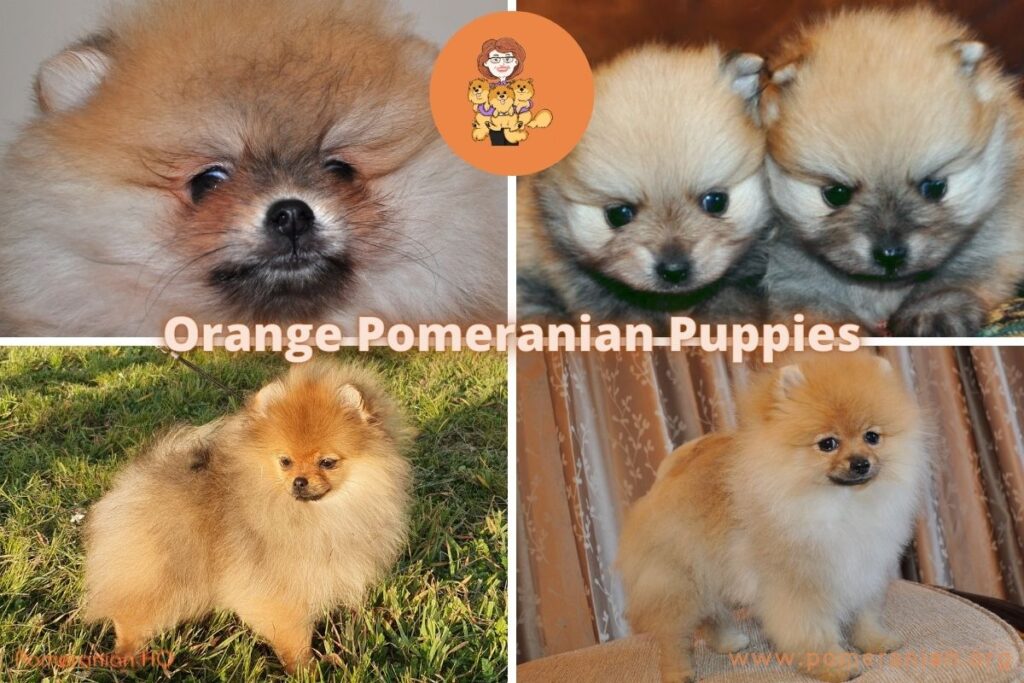
The big question regarding colors was this – was it a list of colors that had been actually seen by Club members or was it a wish list?
In Germany, the acknowledged colors were: brown, black, pure white and wolf sable.
In 1898 the breed standard listed sable and red as approved colors and mentioned:
“any reds that are free of white.”1898 Pomeranian Breed Standard.
In 1909, the color section of the breed standard now mentions:
“sable or shaded sable (including red, orange or fawn)” and “shaded sables” must be shaded throughout, with three or more colors, as uniformly as possible, with no patches of self-color. Oranges must be self-colored throughout, and light shading, though not disqualifying, should be discouraged.”
The Breed Standard has been changed plenty of times since those early days and today the Breed Standard’s section for sables and oranges states that:
“Oranges must be as self-colored and bright as possible.”
Early Famous Orange and Orange Sable Pomeranians
Born in 1894, Mr. T was registered as being “red,” but an eyewitness described the dog as an orange sable.
Ch Dragonfly was born in 1903. He was an orange shaded sable but was actually registered as a shaded sable. Despite not being the very first orange sable, he’s regarded as the founder of that color.
An orange Pom, CH Mars, was born 25 August 1906. He was a “stand-out” amongst orange Pomeranians, despite (like Dragonfly), he wasn’t the first orange Pom.
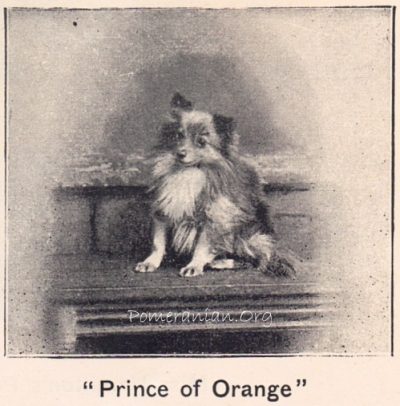
Mrs E. Parker and Mrs Tinsley jointly bred him. The first appearance by Mars was in KC Stud Books following a limit win in 1907 in Edinburgh. He quickly notched up plenty more wins for his owners.
Sirius, his litter brother, was a light orange Pomeranian and registered that way. However, he was sometimes referred to as a cream color. Sirius was bought, for a large amount of money, by American Pomeranian breeders.
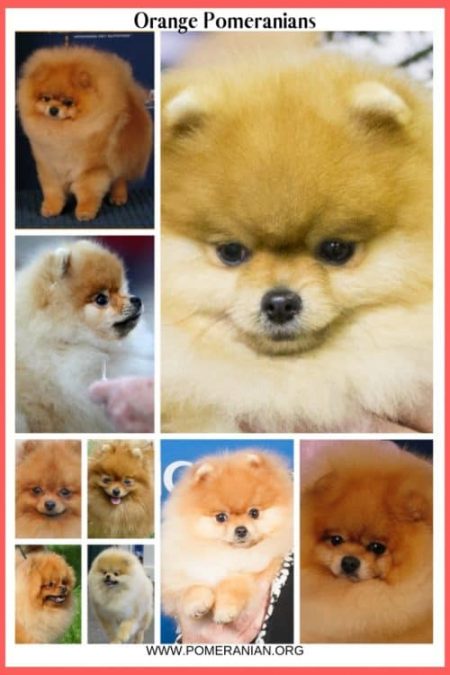
These dogs did not breed true to color, with most of the puppies produced were wolf sables. Oranges and sables were still described as “apt to be flat-coated,” until 1919.
During 1910 – 1911, there was plenty of discussion about how to accurately define both colors along with how to exactly define the sable. If the Pomeranian Standard doesn’t accept a white shade on an orange color, why do they accept a black shade on an orange sable? If an orange color possesses a black muzzle, is it right or wrong?
Breeders took up the color challenge of making this a perfect color every time and achieved a lot of success. After the War, orange and the orange sables totally dominated the show rings wherever they went.
Final thoughts on this Beautiful Pomeranian Color
If every human being was the same height, build, size, had the same hair color and shade, life would be boring because you would find it hard to tell the differences.
So, why should dogs all need the same coloring, size, height, weight and other characteristics?
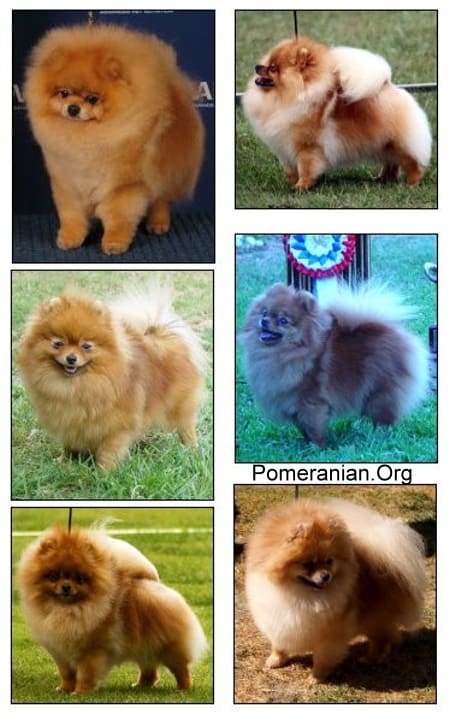
On a Pomeranian, orange is a beautiful color and it’s for this reason that breeders attempt to breed litters to get this color (and others where necessary). Imagine that you’re looking to buy a couple of puppies.
If you choose orange Pomeranians, you can’t really go wrong (providing you always do your due diligence). There are always scammers out there, but if you deal with a registered show breeder, then the risk is minimal and you can focus on what you want from your potential new puppies or dogs.
Copyright Pomeranian.org. All Rights Reserved.
References and Further Reading:
[1] Official Standard of the Pomeranian (AKC). American Kennel Club, 2011.
[2] English Kennel Club Pomeranian Breed Standard, 2017.
[3] Denise Leo, The Pomeranian Handbook.
[4] Milo G. Denlinger “The Complete Pomeranian.”
[5] Kimbering Pomeranians “1891-1991”.
[6] William Taplin’s “The Sportsman’s Cabinet.”
[7] E. Parker “The Popular Pomeranian.”
[8] Lilla Ives “Show Pomeranians.”








